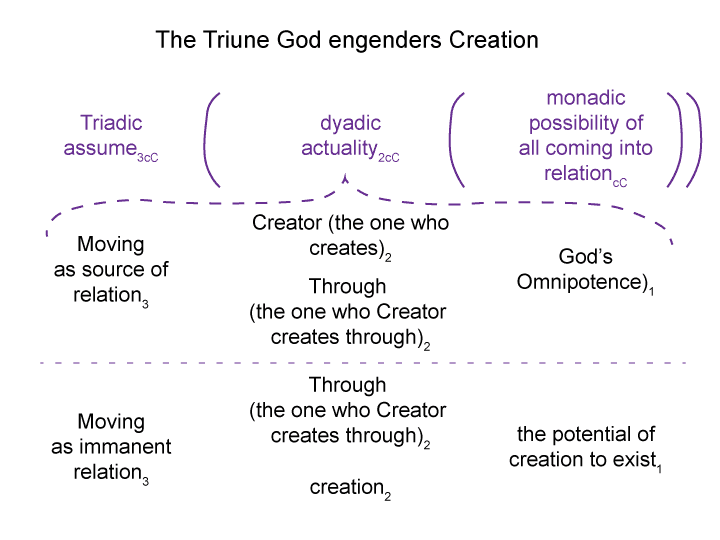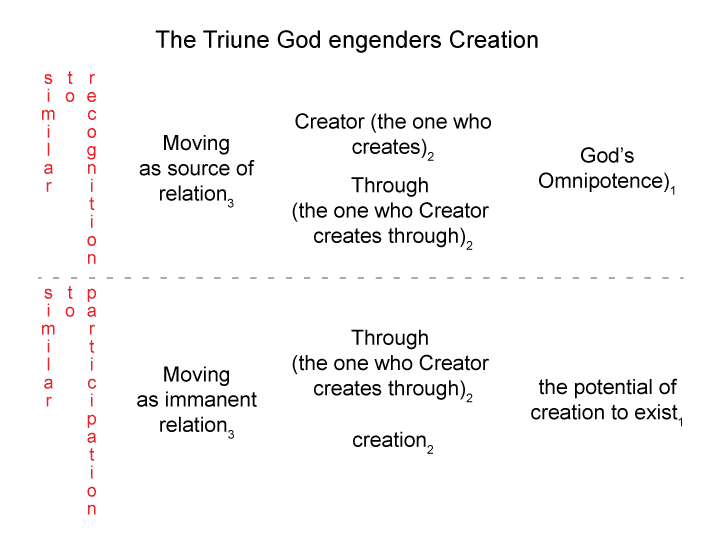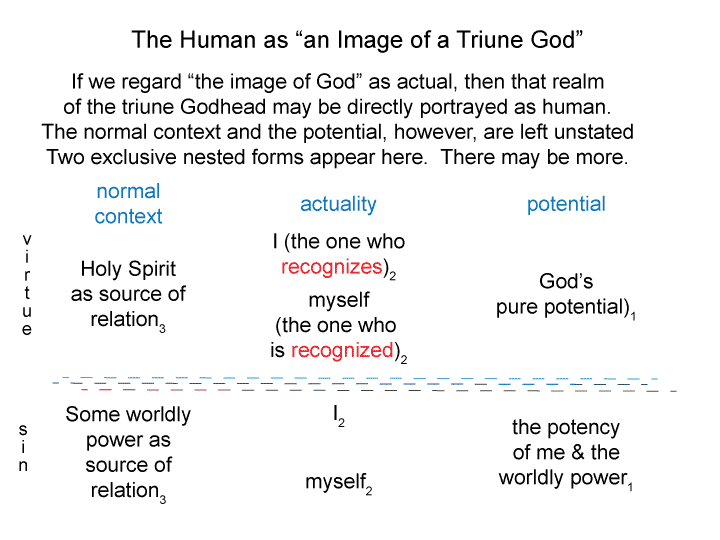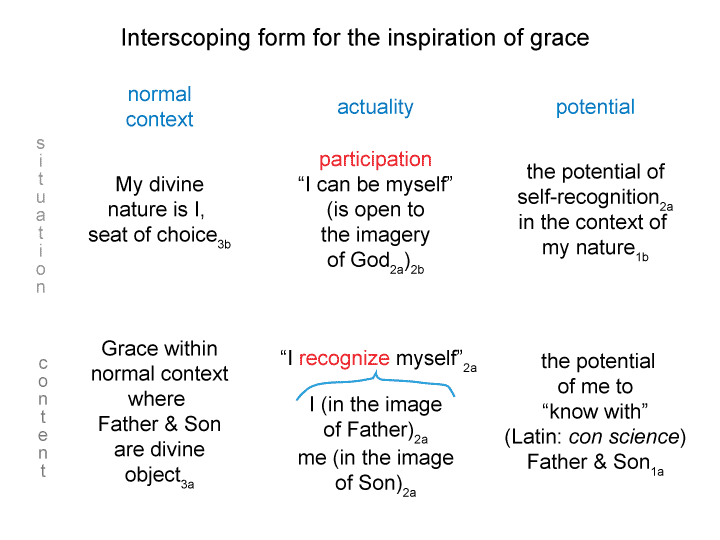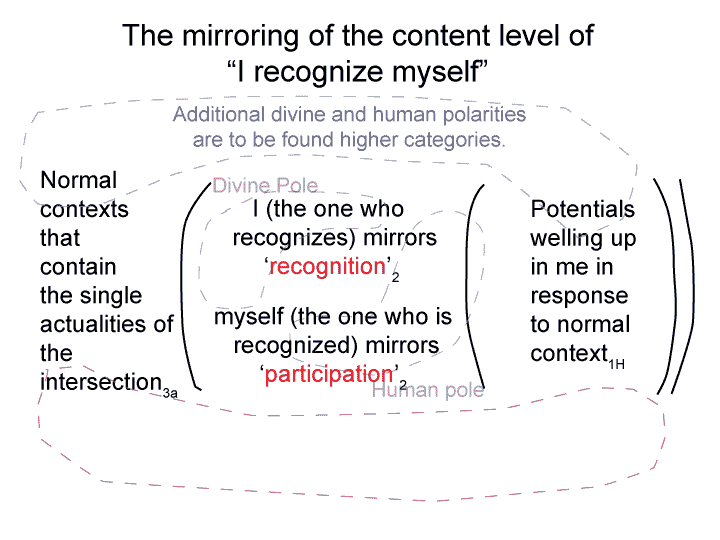Man and Sin by Piet Schoonenberg (1964) 2.1EF
Summary of text [comment] page 69
[The intersection of participation and recognition contains a polarity between divine normal contexts (the sources of grace, as well as self destruction) and human potentials (the subject of grace, as well as self destruction).
This polarity encounters the polarity of exclusive normal contexts that bring either grace or self destruction into relation with the monadic sea of possibility.
Thus, I present an image of the word ‘counter’ in the (translator’s chosen term from the original Dutch) ‘counterpoles’ describing the difference between the source and the subject of grace.
Finally, I compare this intersection to the ground of the dyadic actuality of ‘the human in the image of ‘the One Who Recognizes’ and ‘the One Who Is Recognized’‘. This comparison appears in the next blog.]
Man and Sin by Piet Schoonenberg (1964) 2.1EE
Summary of text [comment] page 69
[At this point, I have a deeper appreciation of the qualifier ‘counter’ in Schoonenberg’s term ‘counterpole’.]
Schoonenberg uses the term to describe the difference between the source and the subject of grace.
[What have I seen with these models?
A fundamental polarity lies within the intersection containing the single actualities of the states of grace or self-destruction. Additional polarities are found in the content-level nested form incorporating this single actuality.
This is shown in blog 2.1 DY.]
Man and Sin by Piet Schoonenberg (1964) 2.1ED-2
[‘Participation’ points to the triadic structure of the divine manifested in the human.
Our human nature is to participate in the divine nature.
How do we do that?
We image God by creating relationships, artifacts and potentials. We create in all three realms of existence, just like God. We are naturally disposed to create.
Participation’ emerges from and situates the potential of my dispositions and natures. ]
Man and Sin by Piet Schoonenberg (1964) 2.1ED-1
[A normal context includes design.
‘Recognition’ points to the design manifested in God Recognizing Himself.
What does God Recognize?
Himself.
God recognizes Himself as a divine object.
Similarly, when ‘I recognize myself’, I may see ‘an image of God.’
Or I may simply see a reflection in a mirror of someone else’s making.
‘Recognition’ emerges from and situates the potential of ‘what I am able to recognize. That is, my conscience, and self.]

